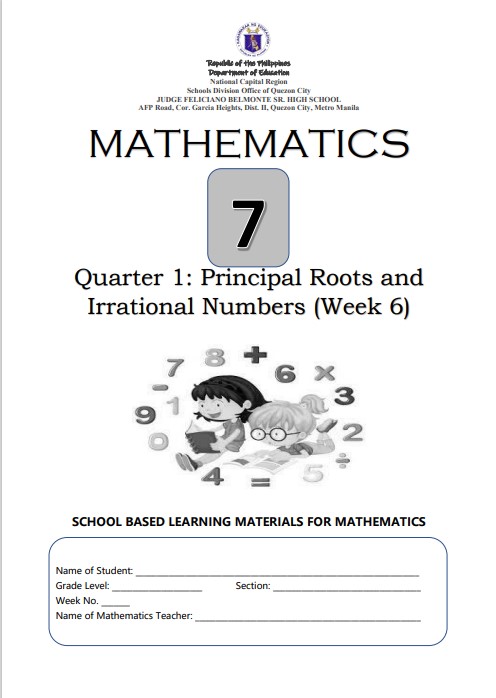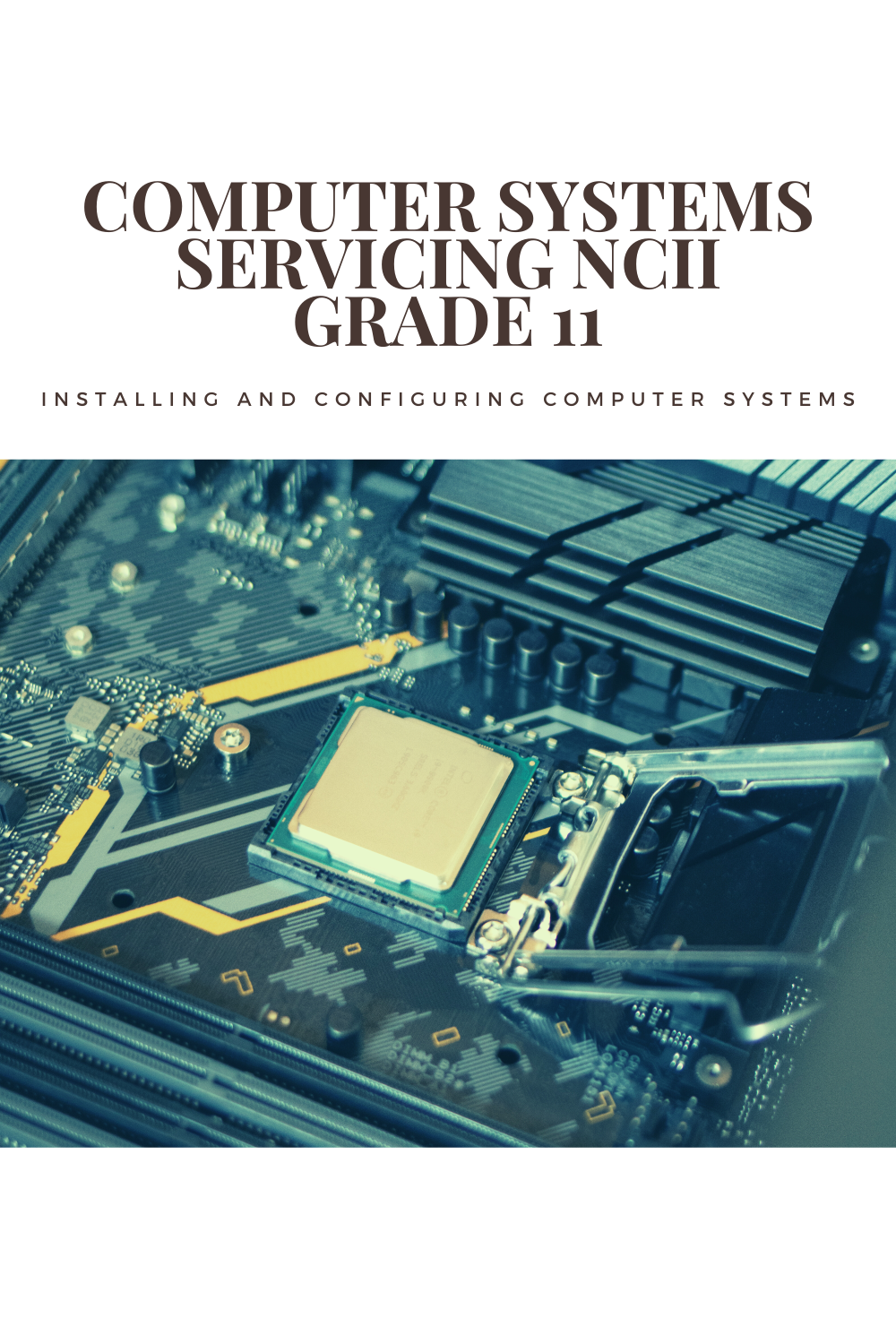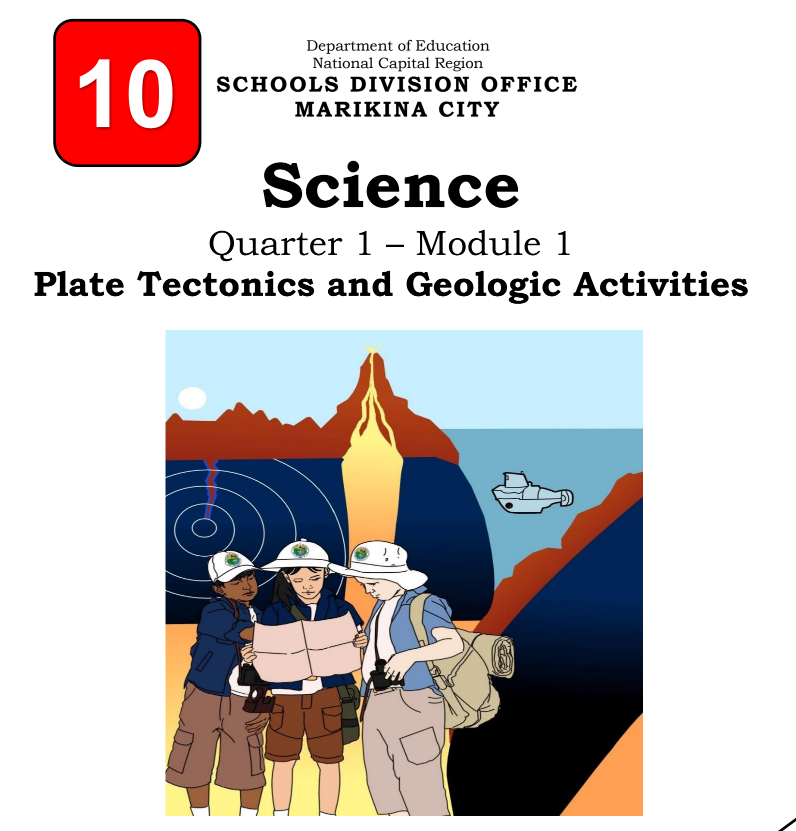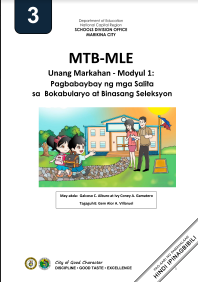
SCIENCE5-QUARTER2-MODULE1-THE HUMAN REPRODUCTIVE SYSTEM
This course gives information about the human reproductive system

319505-Judge Feliciano Belmonte Senior High School_Math 7_Quarter 1-Module 6: Describing Principal Roots of Rational and Irrational Numbers
Radical expression is defined
as any expression containing a radical
symbol  called. It is used to determine the square root of a number, it can also be
used to describe a cube root of a number
called. It is used to determine the square root of a number, it can also be
used to describe a cube root of a number  , a fourth root of a number
, a fourth root of a number  , or higher. For example,
, or higher. For example,  means to find
the cube root of 27.
means to find
the cube root of 27.

The term (x) under the radical sign is called the radicand. The index is the number above the radical sign in a radical expression. A Root is defined as a number which when multiplied by itself to the number of indices gives a real number. A radical is a root of a number. Roots can be square roots, cube roots, fourth roots and so on. If there is no index number written, then it is understood to be 2 (square root).
The Principal Nth Roots
Principal root may be rational or irrational. Remember that all numbers which can be expressed as the quotient of integers are rational numbers. Also, numbers that are terminating or repeating decimals are rational numbers. Decimal numbers that are non-repeating and non-terminating are irrational numbers.

319505-Judge Feliciano Belmonte Sr. High School_Math 7_Quarter 1-Module 6: Describing Principal Roots of Rational and Irrational Numbers
Radical expression is defined
as any expression containing a radical
symbol  called. It is used to determine the square root of a number, it can also be
used to describe a cube root of a number
called. It is used to determine the square root of a number, it can also be
used to describe a cube root of a number  , a fourth root of a number
, a fourth root of a number  , or higher. For example,
, or higher. For example,  means to find
the cube root of 27.
means to find
the cube root of 27.

The term (x) under the radical sign is called the radicand. The index is the number above the radical sign in a radical expression. A Root is defined as a number which when multiplied by itself to the number of indices gives a real number. A radical is a root of a number. Roots can be square roots, cube roots, fourth roots and so on. If there is no index number written, then it is understood to be 2 (square root).
The Principal Nth Roots
Principal root may be rational or irrational. Remember that all numbers which can be expressed as the quotient of integers are rational numbers. Also, numbers that are terminating or repeating decimals are rational numbers. Decimal numbers that are non-repeating and non-terminating are irrational numbers.

Filipino 4
Ang Modyul na ito
Sadyang isinulat at inihanda para sa iyo ang modyul na ito. Ito ang magiging kaibigan mo sa pag-aaral ng Filipino at magiging kasama mo sa pagtuklas ng mga bagong konsepto at kaalaman sa pamamagitan ng pagbasa at pagsagot. Basahin at unawain ang mga panuto na mababasa dito upang maging matagumpay ka sa mga gawaing sadyang inihanda para sa iyo.
Maligayang paglalakbay sa pagkamit ng dagdag na kaalaman sa asignaturang Filipino.

Edukasyon sa Pagpapakatao 8

MATH 5 Q1 WEEK 1 DIVISIBILITY RULES 3, 6 and 9
This activity was designed to help you understand the divisibility rules for 3, 6 and 9 to find common factors of numbers. The activities and exercises are arranged to follow the standard sequence of a lesson.
After going through this module, you are expected to:
1. identify numbers that are divisible by 3, 6 and 9;
2. use divisibility rules for 3, 6 and 9 to find common factors of numbers; and
3. appreciate the use of divisibility rules to find common factors of numbers.

Science 10 Quarter I Week 6 SEAFLOOR SPREADING THEORY
The Earth is alive. There is an activity in the earth’s crust, which had been undergone by the earth itself. One of the theories regarding Earth activity is about the movement of the earth’s lithospheric layer called plate tectonics. To comprehend the earth with its phenomena, including the oceanic phenomena, one substantial thing is to understand the movement mechanism of plate tectonics.
This module will tackle the theories that explain the Earth’s mechanism. Those theories are the Continental Drift, the Seafloor Spreading, and the Plate Tectonic.
At the end of this unit, you are expected to:
1. Describe the possible causes of plate movement. (S10ES-Iaj-36.5)






